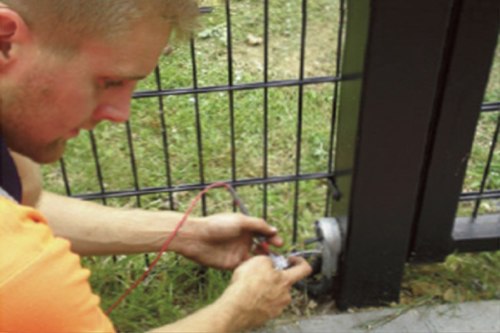As a professional electrician, being asked to simply wire up an automation kit for a manual gate sounds like a reasonable enough request and is probably a task that most electricians would consider to be a relatively straightforward job. But few realise the potential dramatic consequences for undertaking this seemingly uncomplicated task.
In a bid to ‘help out’ or even just ‘earn a bit of extra cash’ the electrician could not only be putting people’s lives in jeopardy, he could also find himself at the centre of a lengthy court case which, may have dire financial and legal implications. In 2014, the two companies involved in the installation / maintenance of the automated gate that killed Karolina Golabek in Bridgend, South Wales were fined a total of £110,000 with a further £40,000 each in court costs.
First and foremost, the addition of automation to a manual gate will result in the system being technically classified as a machine. All machines placed on the market in the European Union have a legal requirement to comply with the EU Machinery Directive 2006/42/EC and in particular the Essential Health and Safety Requirements. This means having 2 types of safety devices fitted to mitigate all of the risks associated with the gate. If by adding automation to the gate the electrician ‘creates’ a machine he becomes responsible for the safety of the device and as such, should have a thorough understanding of the safety requirements outlined in the ‘harmonised’ European product standard for gates which actually includes guidance from no less than eight British Standards. The purpose of this blog is not to blind the reader with technical jargon, and in fact Gate Safe actively promotes the use of ‘plain English’ to convey the complexities of what constitutes a safe and legally compliant gate. However, by quoting the myriad standards / regulations we would hope that electricians would seriously reconsider applying their technical skills to a machine that is capable of killing someone without the relevant knowledge and understanding of what is required to make a gate safe. Specialist training is key, not only to prevent the gate users / members of the public, but also to protect the electrician’s reputation and ultimately his business.
But back to those automation kits. Even if the electrician is suitably trained and is featured on the Gate Safe Aware register, it is widely known that many of the kits on the market today still feature the minimal safety equipment and insufficient appropriate guidance on the key requirements to deliver a safe installation. If an electrician is asked to install such a kit he should refuse to do so, advise the client of the risks associated with fitting such a box of bits and report the provider of the kit to Trading Standards. Until electricians and installers make a stand against these inferior kits, the threat of another serious accident occurring is imminent.
Regardless of the earnings associated with the installation of the automation kit, in truth, what electrician can afford to take this type of risk?
